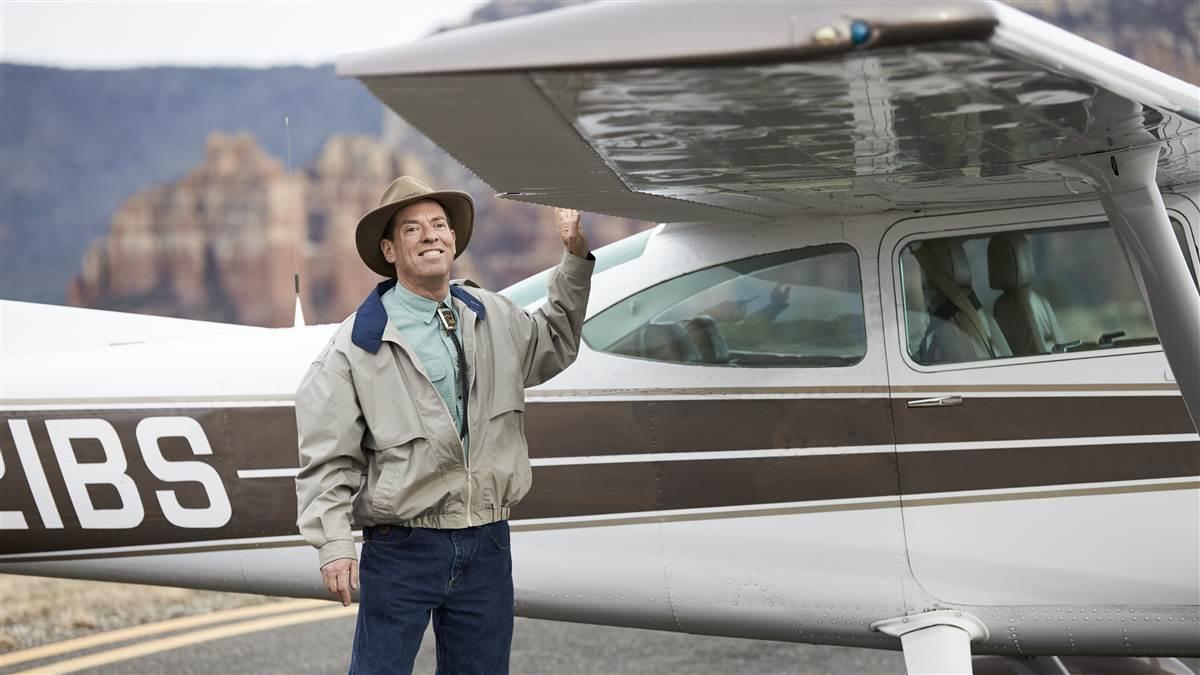Flying Carpet: Dark, Scary Night
Dark, scary night

GregBrownFlyingCarpet.com
As a new private pilot, Wood had invested in a Cessna 182 and launched on ambitious regular flights between her Detroit home and Charleston, South Carolina, where she has family and business. Wood is exceptionally careful and diligent, but 18 months after earning her wings, she’d experienced a scare. Battling unforecast headwinds from South Carolina with her nonpilot husband, Roger, the couple had arrived home after dark.
“I was legally night current,” Wood said the next morning, “but wasn’t planning on night flight.” Her first challenge was finding urban Oakland/Troy Airport (VLL) under Detroit Class Bravo airspace, landlocked by obstacles and buildings. “All I saw were lights, everywhere.” Then, on the downwind leg of the traffic pattern, the runway lights—activated by a previous aircraft—went out. Rattled, she keyed the mic too quickly to reactivate them. Fortunately, her former CFI Wayne Hendrickson was waiting to help hangar the airplane, and triggered the lights with his handheld radio.
Now flustered, Wood turned final for Troy’s obstructed 3,549-foot runway, high and too fast. So, she went around. But this time she flew downwind too near the runway and overshot final, destabilizing her approach. This began a dangerous chain of events.
“Not anticipating another go-around, I neglected to retrim. I retracted flaps, failed to gain altitude—airspeed was fine—and turned crosswind too soon, far below pattern altitude. I was scary low, and all I could think about were the invisible high-tension wires and buildings around me. Luckily, I didn’t lose control, as my flying was far from stable. For the first time, I felt panic,” she recalled.
When Hendrickson saw Wood’s low go-around, he radioed “altitude, altitude, altitude,” told her to climb, and then talked her around the traffic pattern. “Wayne’s trusted voice helped calm me,” Wood said. “My training kicked in, and I made a nice landing. However, I’d scared myself, my husband, and my instructor—both of whom questioned my judgment. Now I completely understand how accidents happen.” Wood vowed never to put herself in this position again.
“Much as I cringe at the experience, I’ve decided to stop flogging myself and learn from it. Night clearly requires a different and unique skillset from daytime; I’ve already scheduled more training.” (She practiced a dozen landings with Hendrickson the following night.) “The other takeaway is that not all airports are the same after dark. In hindsight, I could’ve diverted to Pontiac, a larger, towered, better-lit field only seven minutes away. It’s as if I was desperate to get on the ground. The experience was frightening, but eye-opening. My newest mantra: ‘Current is not synonymous with competent.’”
I explained that most private pilots require several hours of post-checkride night training to achieve relative proficiency. We discussed the impact of fatigue following that long flight, the value of regrouping outside the traffic pattern when necessary, and the correlation between night and instrument flight. Most timely was her own suggestion of diverting.
When we recently talked again, Wood had started instrument training, and shared lessons distilled from last year’s flight.
“In my postflight autopsy, I determined what happened, why, and how to fix it. It was like exorcizing a ghost. Just because your certificate says you can fly day, night, and carry passengers, doesn’t mean you’re fully qualified to do so under every condition. Before this incident, I thought ‘flying is flying.’ But when you explained that night flying is closer to instrument flying, I got it. My daytime landing scan is ‘outside—airspeed—altitude—outside.’ But at night the attitude indicator must enter the equation,” she said.
“This experience made me a better all-around pilot; it helped me break a chain of events several months later and divert due to weather. That little piece of plastic does not mean you’re infallible; every unique situation requires a decision on your part—listen to that voice, and act on it.” >



